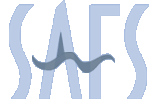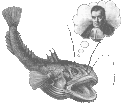UW Aquatic & Fishery Sciences Quantitative Seminar
Jim Thorson
NOAA Northwest Fisheries Science Center
The importance of space when estimating density dependence: an example of state-space models using random fields
Abstract
Identifying the existence, form, and magnitude of density dependence is one of the oldest concerns in ecology. Ecologists have aimed to estimate density dependence in population and community data by fitting a simple autoregressive (Gompertz) model for density dependence to time series of abundance for an entire population. This exemplifies a typical workflow in population ecology, where spatially referenced data are pre-processed to estimate spatially aggregated measures of a population (i.e. indices of abundance, age composition, etc.), and these aggregate measures are then used to estimate parameters for a non-spatial or stratified population model. However, improvements in statistical and computational methods allow population dynamics to be estimated using spatiotemporal models, which replace variables representing total abundance with random fields representing population densities over the population's range. We provide a brief introduction to spatiotemporal methods, including their estimation using Template Model Builder, while demonstrating a new state-space (log-Gaussian Cox) model involving Gompertz-form density dependence. We use simulation experiments and hook-and-line data for three rockfishes in the California Current to contrast spatial and non-spatial models, and results indicate that non-spatial models can result in biased estimates of both population abundance and the strength of density dependence. We conclude by discussing future prospects for this rich vein of research regarding spatial population-dynamics models.

